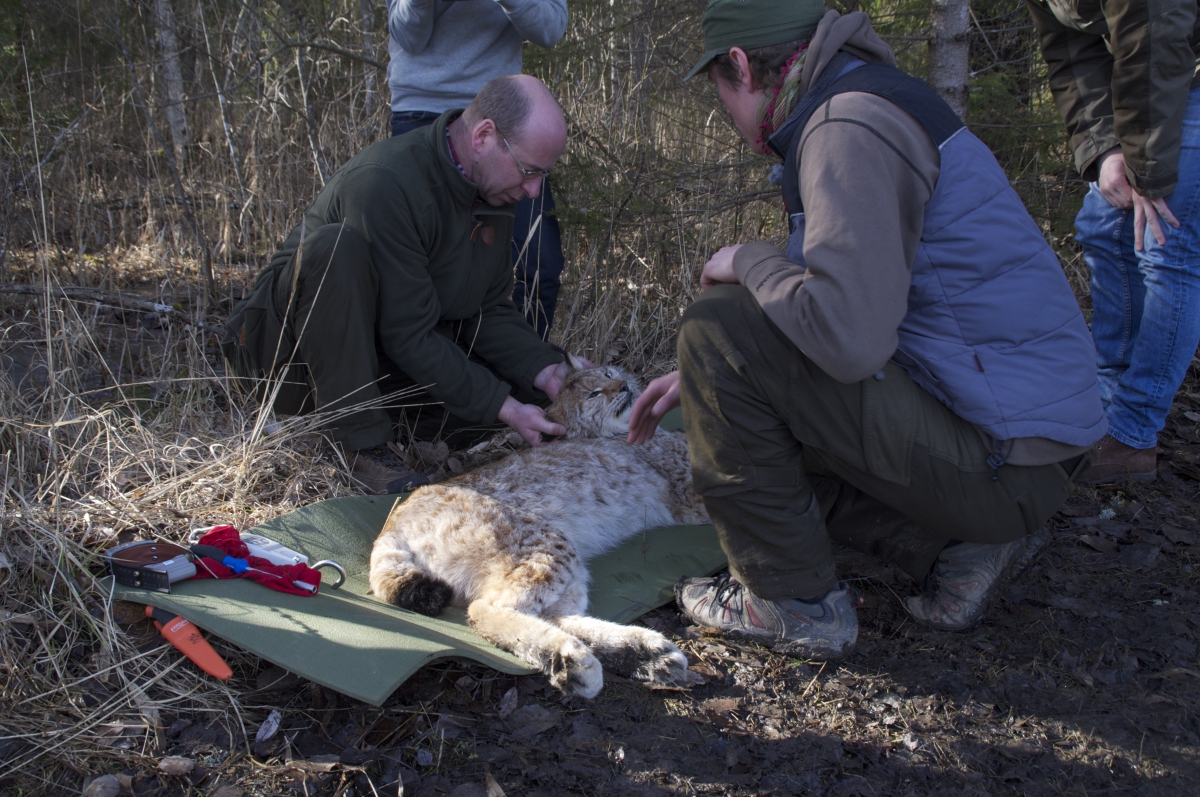Estonian lynxes with satellite collars
Sisu

This year one lynx in Polvamaa wears a satellite collar. In the image zoologists from the Estonian Environment Agency put the collar on the anesthetized cat.
Photo: Jaanus Remm
Estonian text posted by the Animal of the Year Team 19.01.2018
Translation Liis
Zoologist Raido Kont writes about the collar marking of Estonian lynxes.
Why are lynxes in Estonia provided with collars for tracking?
In order to use the surveillance method employed in Estonia successfully it is important to understand the territory usage of a lynx, for instance how much a lynx moves on average during a 24 hour period, how large an area it moves in and whether the home territories of different individuals overlap or not. To collect such data for the local lynx population a study was started in 2008 which monitors lynxes with satellite collars and periodically forwards information about their positions. In addition to tracking the movements of the animals the information is used to study the feeding of the lynxes since on the marked locations on the map the remains of the killed animals can be found and on the basis of the collected data an estimate can be made of how often lynxes slay their prey and how this affects the number of prey animals. To date 18 lynxes have been monitored by satellite telemetry and at the moment a lynx in Põlvamaa is provided with an active satellite collar.
Raido Kont talks more about our lynxes with satellite collars on Thursday January 25 at 18.00 o’clock in the cafeteria of the Tallinn Zoo Center for Environmental Education at the opening night of the Animal of the Year, where all are welcome to see and hear how our big felines fare



